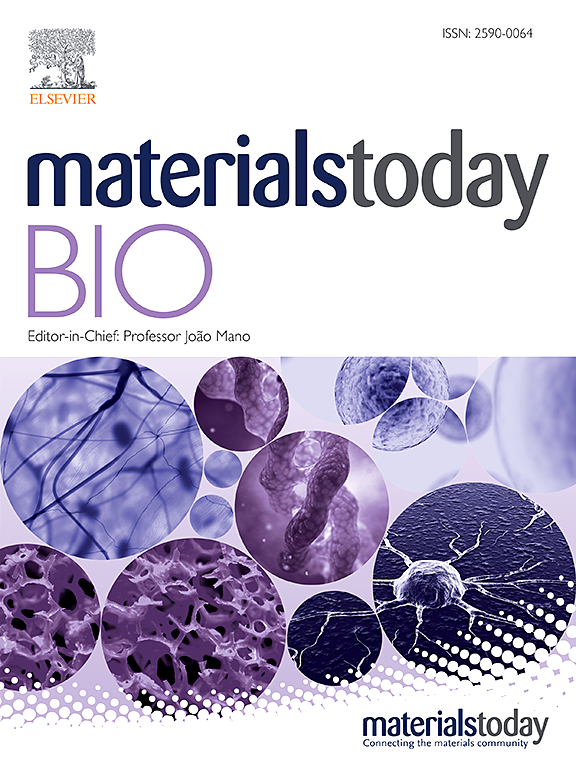Inactivation of antibiotic resistant bacteria by nitrogen-doped carbon quantum dots through spontaneous generation of intracellular and extracellular reactive oxygen species
IF 8.7
1区 医学
Q1 ENGINEERING, BIOMEDICAL
引用次数: 0
Abstract
The widespread antibiotic resistance has called for alternative antimicrobial agents. Carbon nanomaterials, especially carbon quantum dots (CQDs), may be promising alternatives due to their desirable physicochemical properties and potential antimicrobial activity, but their antimicrobial mechanism remains to be investigated. In this study, nitrogen-doped carbon quantum dots (N-CQDs) were synthesized to inactivate antibiotic-resistant bacteria and treat bacterial keratitis. N-CQDs synthesized via a facile hydrothermal approach displayed a uniform particle size of less than 10 nm, featuring a graphitic carbon structure and functional groups including -OH and -NH2. The N-CQDs demonstrated antimicrobial activity against Staphylococcus aureus (S. aureus) and methicillin-resistant S. aureus, which was both dose- and time-dependent, reducing the survival rate to below 1 %. The antimicrobial activity was confirmed by live/dead staining. In in vivo studies, the N-CQDs were more efficient in treating drug-resistant bacterial keratitis and reducing corneal damage compared to the common antibiotic levofloxacin. The N-CQDs were shown to generate intracellular and extracellular ROS, which potentially caused oxidative stress, membrane disruption, and cell death. This antimicrobial mechanism was supported by scanning and transmission electron microscopy, significant regulation of genes related to oxidative stress, and increased protein and lactate dehydrogenase leakage. This study has provided insight into the development, application, and mechanism of N-CQDs in antimicrobial applications.

求助全文
约1分钟内获得全文
求助全文
来源期刊

Materials Today Bio
Multiple-
CiteScore
8.30
自引率
4.90%
发文量
303
审稿时长
30 days
期刊介绍:
Materials Today Bio is a multidisciplinary journal that specializes in the intersection between biology and materials science, chemistry, physics, engineering, and medicine. It covers various aspects such as the design and assembly of new structures, their interaction with biological systems, functionalization, bioimaging, therapies, and diagnostics in healthcare. The journal aims to showcase the most significant advancements and discoveries in this field. As part of the Materials Today family, Materials Today Bio provides rigorous peer review, quick decision-making, and high visibility for authors. It is indexed in Scopus, PubMed Central, Emerging Sources, Citation Index (ESCI), and Directory of Open Access Journals (DOAJ).
 求助内容:
求助内容: 应助结果提醒方式:
应助结果提醒方式:


